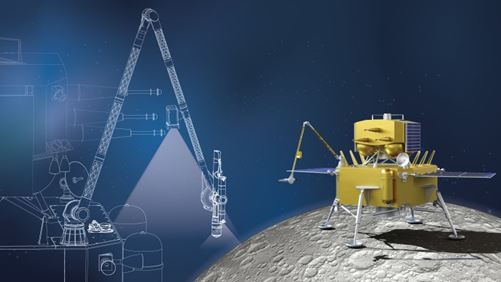PolyU-developed space instruments contributed to Nation’s first lunar sampling mission

In contribution to China’s Chang’e 5 mission, a research team led by Ir Prof. Yung Kai-leung—Director of the Research Centre for Deep Space Explorations (RCDSE), Associate Head of the Department of Industrial and Systems Engineering, and Sir Sze-yuen Chung Professor in Precision Engineering at PolyU—developed and manufactured the “Surface Sampling and Packing System”. The System successfully acquired samples of rocks and soils from the lunar surface via robotic means, marking a new breakthrough in the Nation’s space exploration project, as China became the third nation in the world to bring back lunar samples.
Chang’e 5 is China’s first mission to collect lunar samples and the world’s first lunar-sample return mission since the previous exploration in the year 1976. PolyU is the only tertiary institution in Hong Kong that possesses international deep space qualification experience and contributed to the Chang’e 5 mission.
The development of the System was technically complex and required very high levels of precision, accuracy and reliability. Prof. Yung’s team overcame significant technical challenges in devising a system that could withstand the extreme space environment during different stages of the lunar mission. These challenges included the high daytime surface temperature and high-vacuum environment on the Moon, the impact and shock (e.g., solar winds and cosmic rays) on the equipment, and very strict weight limits for all devices used in the lunar mission. After six years of continuous effort and numerous trials, the team came up with a system of more than 400 components, made from materials including titanium alloy, aluminum alloy and stainless steel.
Chang’e 5 collected lunar samples through two means: a robotic arm for collection of lunar surface samples and a drilling machine for collection of underground samples. After Chang’e 5 landed on the near side of the Moon, the System’s samplers acquired 1.5 kg of surface materials from the Moon and sealed them in a container. The robotic arm then lifted the container and placed it into an ascender. The ascender blasted off into lunar orbit, rendezvoused and docked with the orbiter, and transferred the sample container to the return vehicle that travelled back to Earth.
Lunar samples collected during the Chang’e 5 mission will help scientists understand some of the Moon’s mysteries. The samples collected were the youngestever lunar samples brought back to the Earth, since Chang’e 5 landed in a region of the Moon much younger than those previously visited.
The System was awarded the “Scientific Technology Progress Award (Second Prize)” by the China Aerospace Science and Technology Corporation (CASC) and received an appreciation letter from The China Academy of Space Technology (CAST) for the University’s contribution to space instrumentation. In addition, Prof Yung was individually bestowed with the “Scientific Technology Progress Award (Second Prize)” by CASC.



